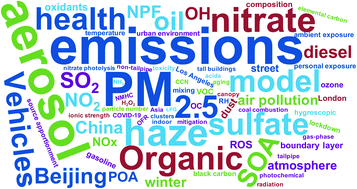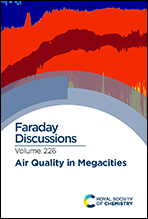Concluding remarks: Faraday Discussion on air quality in megacities
Abstract
Megacities are metropolitan areas with populations over 10 million, and many of them are facing significant global environmental challenges such as air pollution. Intense economic and human activities in megacities result in air pollution emissions, inducing high levels of air pollutants in the atmosphere that harm human health, cause regional haze and acid deposition, damage crops, influence regional air quality, and contribute to climate change. Since the Great London Smog and the first recognized episode of Los Angeles photochemical smog seventy years ago, substantial progress has been achieved in improving the scientific understanding of air pollution and in developing emissions reduction technologies and control measures. However, much remains to be understood about the complex processes of atmospheric transport and reaction mechanisms; the formation and evolution of secondary particles, especially those containing organic species; and the influence of emerging emissions sources and changing climate on air quality and health. Molina (DOI: 10.1039/D0FD00123F) has provided an excellent overview of the sources of emissions in megacities, atmospheric physicochemical processes, air quality trends and management, and the impacts on health and climate for the introductory lecture of this Faraday Discussion.

- This article is part of the themed collection: Air quality in megacities

 Please wait while we load your content...
Please wait while we load your content...